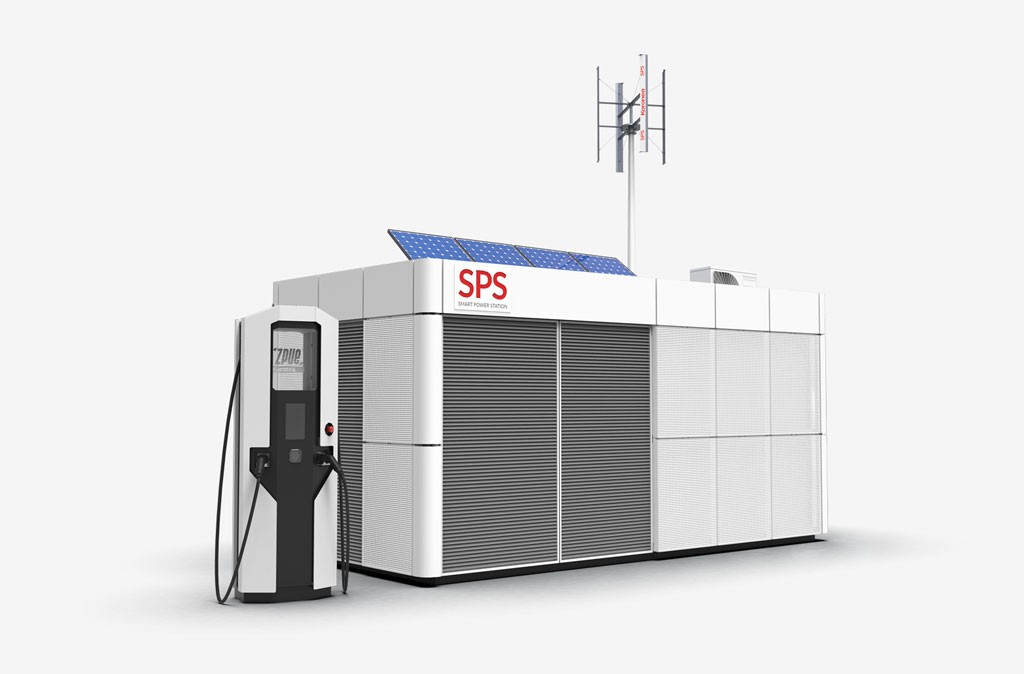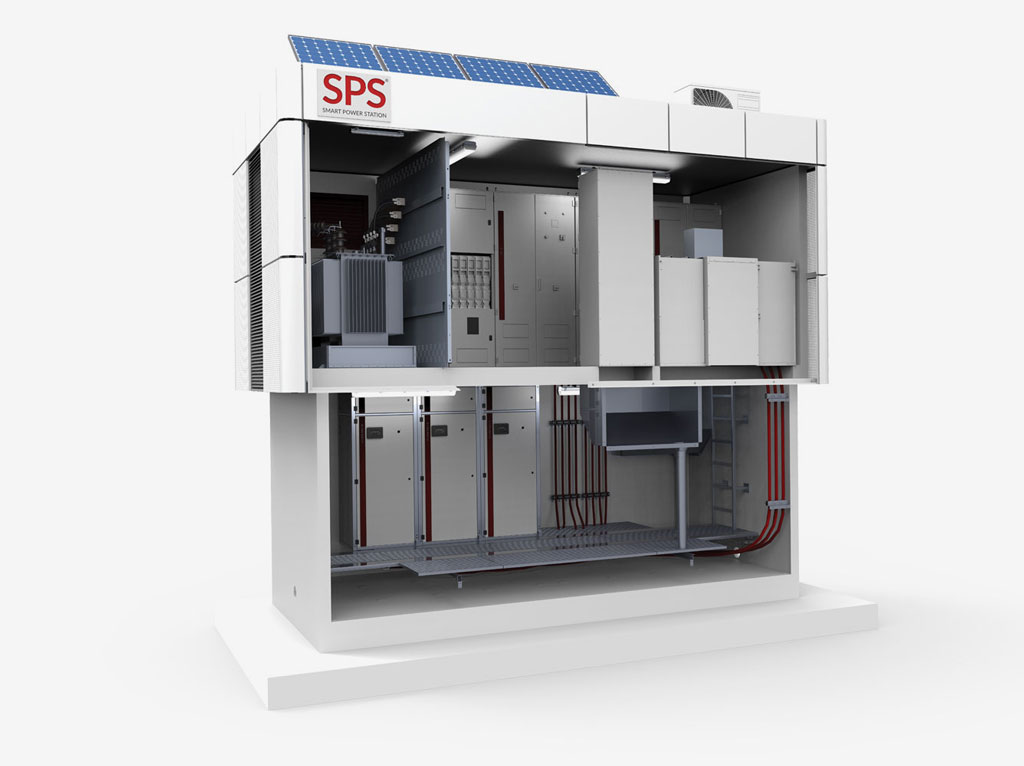
A smart transformer station with energy storage is a solution that integrates the functions of a remotely managed distribution transformer station operating in a Smart Grid system with a bidirectional inverter working with a lithium-ion battery energy storage system. The station is equipped with an internal charging station, enabling the charging of electric vehicles. The system is complemented by the possibility of supplying the energy storage system or consumers directly from renewable energy sources, such as photovoltaic or wind farms.
Components of a smart transformer station with energy storage:
- Energy storage device,
- Bidirectional inverter,
- Low voltage switchgear,
- Power transformer,
- MV switchgear (optional),
- SPS-Control control cabinet,
- Fire detection and extinguishing system,
- HVAC system,
- optional components: fast chargers for electric vehicles, inverters for renewable energy sources, fire extinguishing system.
Advantages of a smart transformer station with energy storage:
- The station enables automated intelligent management of energy flow from the grid and renewable energy sources, allowing batteries to be charged when generation exceeds demand or when grid energy prices are low, and discharged when prices are higher/generation is low (price arbitrage).
- It allows for smoothing out power peaks and enables adjustment of the value and direction of active and reactive power flow.
- It can be used to provide backup power in the event of a power failure.
- The station provides charging facilities for electric vehicles, including both passenger cars and buses, thanks to a charging station with a specific power rating.
- Individual components can form independent installations. However, when managed by SPS-Control, they can also work as a single advanced system that effectively improves the reliability of power supply to electrical facilities, optimises electricity demand and the associated financial outlay.
- The smart transformer station with energy storage is a fully scalable station. This means that we respond to every request from our customers, striving to create a facility that is fully optimised and tailored to the specific needs of the user. A common feature of SPS stations is their two-part construction, with an above-ground section and an underground section (it is possible to construct the entire station above ground).
- The possible location of batteries in the underground section ensures optimal operating temperature of the cells without the need for an extensive HVAC system. An additional advantage of the underground location is fire safety. The enclosure with batteries below ground level creates natural fire barriers, which significantly improves the fire resistance of the entire station. This solution also allows for a twofold reduction in the building area compared to a traditional above-ground solution.
- The adaptation of energy storage technologies, such as lithium-ion batteries with different chemical compositions, lead-acid batteries or supercapacitors, allows the technical parameters of energy storage systems to be tailored to the required application and functionality.

Energy storage units manufactured by ZPUE are available in several design variants:
- above-ground structure, where the whole structure is traditionally built above ground;
- above-ground and underground structure, where the battery is installed underground (an additional advantage of this solution is fire safety. Locating the battery enclosure below ground level creates natural fire barriers, which significantly improves the fire resistance of the entire station);
- multi-storey construction, where part of the equipment (converter) is installed on the upper floor
